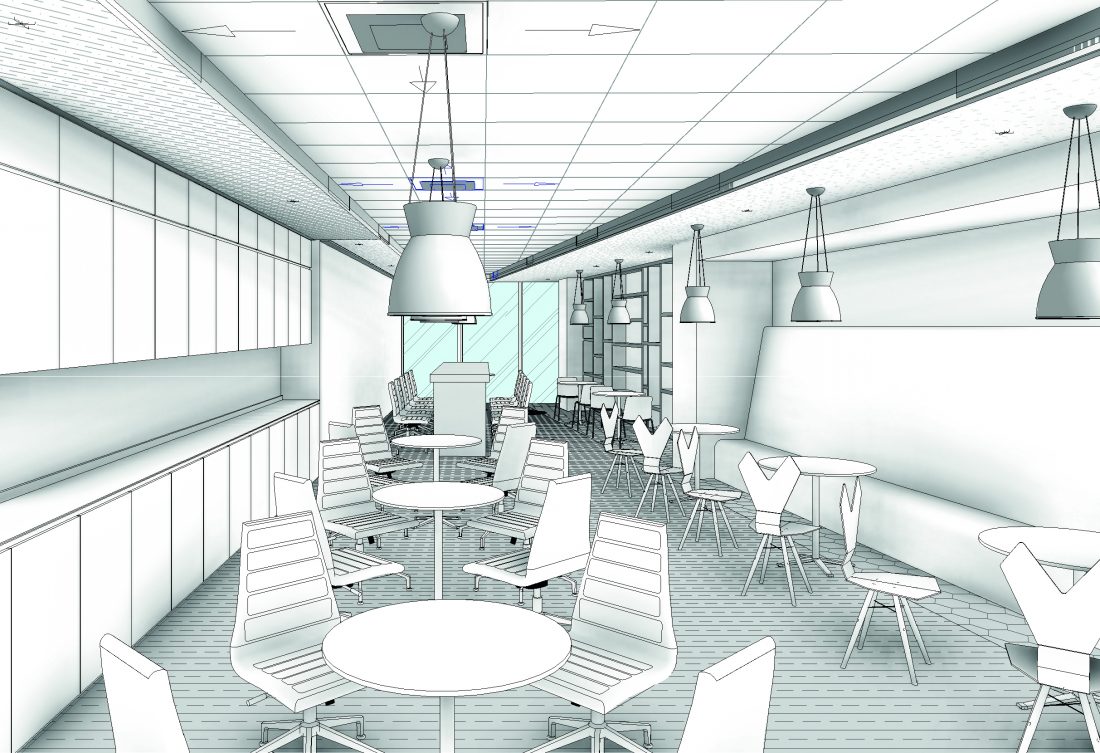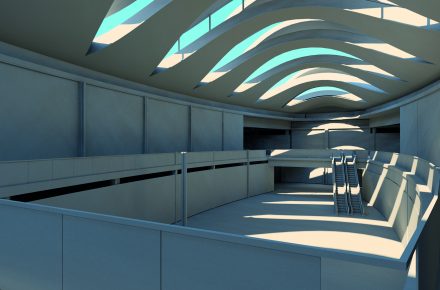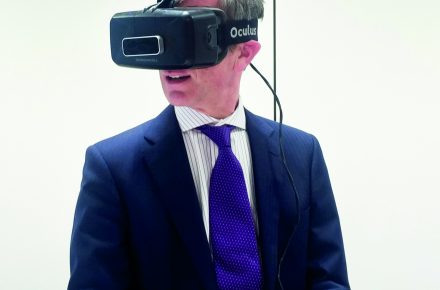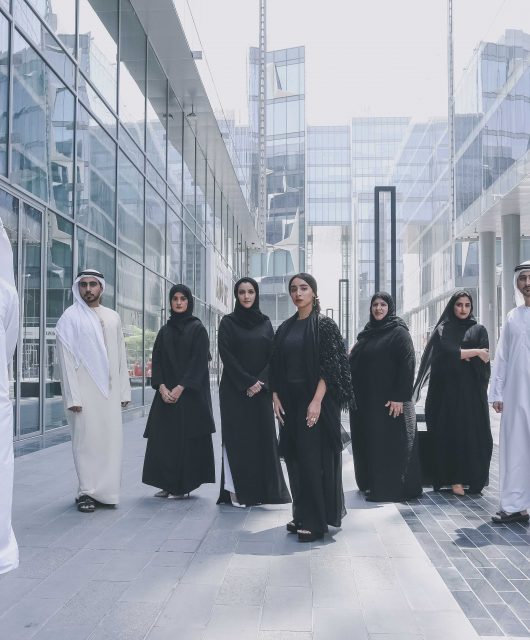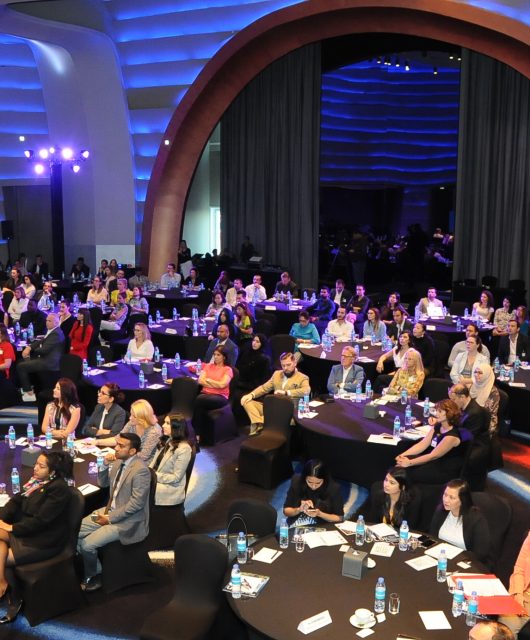Building information modelling software or BIM in common industry parlance, isn’t the first tool interior designers typically reach for when they start out on a project. A few years ago everyone would be forgiven for knowing nothing of software that was more for the likes of structural engineers or mechanical and electrical specialists. But times have changed. For one, green building regulations in the UAE have become more prevalent, got tougher and in some instances become mandatory. Meeting some of the regulations means staying on top of issues such as waste reduction – one of many things BIM can help with. In addition, usage of the technology is being mandated to a higher degree. The first such regulations hit Dubai in 2013 and were expanded in 2015. While these mandates currently cover only certain kinds and sizes of project, many feel the writing is on the wall regarding full-scale adoption, a factor that has seen some make the commitment early.
“In 2012 we had a lot of conversations around BIM,” says Ben Corrigan, the founder and CEO of Bluehaus Group. ‘Is it the future? Is the region ready for it? Is it something we want to invest in?’ We made the decision that by 2014 we wanted to be delivering our projects in Revit as standard.” At the time, Bluehaus Group was very much an interior design company, but now the 60-strong boasts a dedicated MEP division, making the adoption of BIM in the form of Autodesk’s Revit – just one of a number of BIM software options on the market – all the more prescient. Once the decision had been made, the transition itself was not a simple process, nor was it instant. “I think we underestimated at the time the effort required to make that leap culturally, more so than anything else,” explains Corrigan. “It took us a good couple of years to really understand where we were going with BIM within interior design, where a lot more is bespoke than in engineering.
“The period of the first two years was quite painful. You are changing the culture of your business. What surprised us is that in the past when we’ve invested in software or made a change, it has been quite simple: you buy the program, train individuals in the business and move forward. You’ve got to have a team of people who are willing to embrace change. What we realised with BIM is that it’s as much about a cultural shift as it is about the investment itself.”
Computer love
Gone are the days when they Bluehaus had designers or architects marking up drawings then feeding them to a CAD draughts person. Changes to the workflow meant the company had to have a much more skilled-up team. There were other
challenges too. One of the most cited barriers to interior design firms making the investment in BIM is the nature of many of a project’s components. While off-the-shelf products, such as furnishing items, will often be available with BIM models ready to drop into a design, bespoke elements are not. Creating a BIM model of such a one-off feature is unlikely to be worth the effort, but compromises are possible and working across both BIM and AutoCAD has proved an effective compromise. “While we work 100 per cent in Revit across the group in architecture and MEP, we still accept that anywhere between 10 to 30 per cent of an interior project may be in AutoCAD,” says Corrigan, “although that might change in future.”
With project cycles spanning anywhere from six to 18 months, it was a while before the benefits of shifting to BIM began to accrue. But when they did, the changes were very noticeable, says Corrigan. Some of these might be common to any business in the construction and design industry, including seeing project coordination get better and resulting improvements in the delivered product. Clash detection tools within Revit also proved a boon. But perhaps the greatest positive was the closer interaction with clients, who were getting to see their designs in more detail and as a result offering better feedback.
“We can’t always expect our clients to understand the design the way we are
communicating it,” says Corrigan. “So by working in 3D, almost from the get-go, you are showing them much more design, which means they are feeding back on it much more.” Corrigan says the adoption of BIM has generated a host of other innovations, including creation of 3D fly-throughs built on the back of Revit, and the use of virtual reality to present designs to clients. “There is a real benefit in the design phase, in the upfront 3D presentation phase – there’s a fantastic benefit in terms of being able to produce a detailed design package more efficiently – but it is also spawning a lot of interesting innovation within the business where people are exploring what else it can do.”
Brave new world
The ability to translate models into video game-style virtual environments might sound like a gimmick. But what few of them realise is that such projections are not merely a simple representation of the design but are in fact drawn directly from the models, accurate down to the last light fitting, AC vent or carefully selected chair. And this fact can give a virtual reality presentation real power
“The way it can really help the creative side is by getting the collaborators to understand each other’s work.” Dunk, who specialises in virtual and augmented reality, believes both are a natural extension for BIM. The two go hand in hand and while you can have one without the other, most vendors are now bundling them together. “If you’re spending all that money on BIM, then you might as well go to the effort of adding the virtual reality because you’re already working in a 3D environment,” he says.
Using virtual reality is a way of creating a visualization that is up to date and relevant. While not typically beautiful 3D visuals, they are robustly accurate, enough to allow clients and collaborators to understand the project at a human scale. But while virtual reality is a great way to present visuals, People react differently to virtual reality, much as they do to 3D movies, with some having a
greater tolerance for it that others. The tactile and olfactory elements are also missing, as well as what Dunk describes as a sense of presence – where you literally see yourself inside the design. “Digital mock-ups allow decision makers to make a call,” says Dunk. “It’s all about ‘optioneering’ – giving people options, helping them understand and reach a decision.”
The real future may lie in projection studios in which people can experience a design together, or in a more portable augmented reality, with digital design elements overlaid on a real physical environment – think Pokémon Go. While it may be some time before such tools become commonplace, it’s not just about the technology being ready but getting designers to use the existing software options. “Many companies aren’t adopting BIM,” explains Dunk. “If we’re gong to influence [adoption] we have to champion the cause of collaborative working and working in 3D – it’s about a culture of working together with a single source of truth.When you have that then you can start talking about BIM and virtual reality.”
The full advantages of BIM will only become apparent with greater levels of adoption, spurred by both the regulatory environment and client contracts that either support or demand its use. Experience so far suggests this will be a significant cultural shift for many organisations, but the benefits are there to be taken.
“BIM is about a single source of truth and about having a collaborative process”

